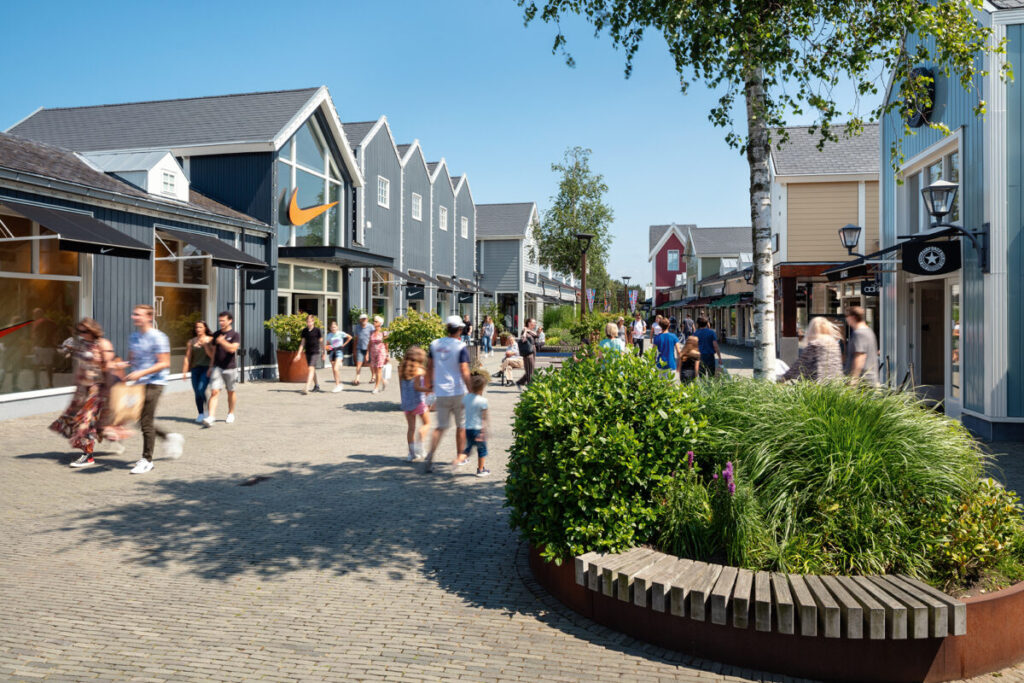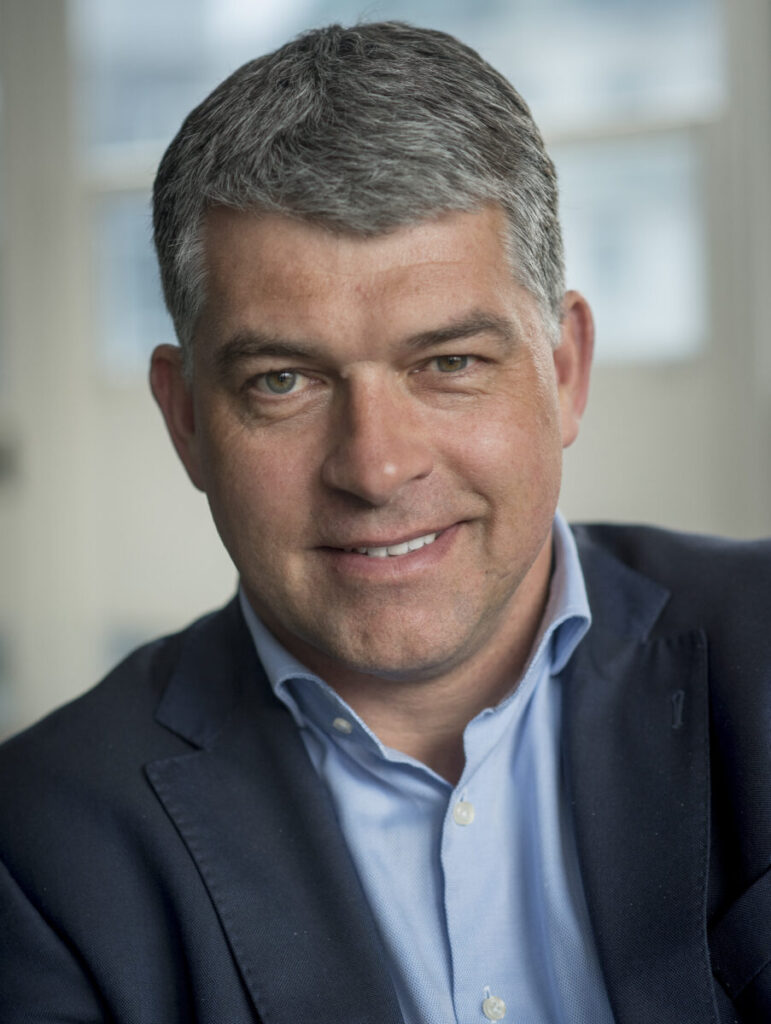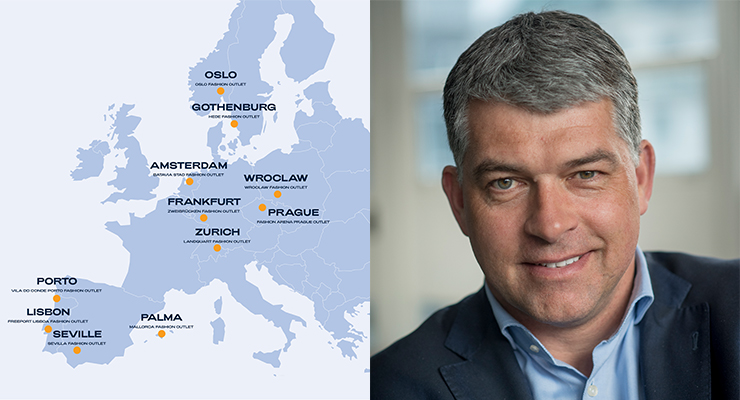ACROSS: The outlet sector has significantly changed over the past decade. What is your personal assessment of its development?
Otto Ambagtsheer: In the past, the outlet channel was used to sell overstock. Today, outlets are an integral part of a brand’s omnichannel strategy. More and more brands have decided to enter the outlet channel because it is too big for retail brands to ignore. The outlet format is a fast-growing channel and a direct channel to the consumer. In most cases, it is also a premium environment. As a result, more and more premium retail brands are choosing to open stores. We strongly focus on placemaking, creating a whole day-out experience with a solid focus on the guest experience. That is where brands want to be.
ACROSS: Are current challenges, such as the energy crisis, inflation, and high rents, also driving the wave of success?
Ambagtsheer: Over the past decade, the outlet channel has performed well in both high and low economic times. When consumers’ purchasing power is under pressure, they appreciate a discount of 30% to 70% off regular retail prices. However, when the economy is doing well, they like to buy more premium brands
ACROSS: You currently operate 11 outlets across Europe. What are your top locations?
Ambagtsheer: In 2023, all 11 outlet centers in the nine countries in which we operate have grown compared to 2022. They have all showing substantial, healthy growth in terms of percentages. 2022 was a record year for us in terms of brand sales. We’re averaging double-digit growth over last year. However, when we look at the different locations, we see very healthy growth, especially in Iberia. That is also due to the fact that tourism has returned to 2019 levels. We have strong centers in Lisbon, Porto, Seville, and Mallorca. We are also working on an expansion project in Seville, which is scheduled to open at the end of October. The timing couldn’t be better, as we are already seeing strong performance and a lot of brand appetite.
ACROSS: What will be done with the expansion there?
Ambagtsheer: It is one of the smaller centers in our portfolio. We always wanted to offer a more comprehensive brand mix. You need a critical mass of brands to attract people from a wider catchment area. That needed to be improved. We saw incredible performance in 2022 and have continued to do so in 2023. We felt that the center and the market were ripe for an expansion project. A key part of the expansion project is relocating and upsizing the Nike store from 722 sq m to nearly 1,100 sq m. That means they will be able to set up a store there that flagship-like in character. We are also going to open a Hugo Boss store. Our strategy is to take the entire center and the existing GLA into account when we expand. For example, a Starbucks kiosk will be opened there as well. So, there will be an excellent mix of international brands, but we will also pay attention to what we call the beautiful local brands – the very specific Andalusian brands that you can only find in that part of the world. That is a crucial part of the brand mix.
ACROSS: The Nike example proves the trend that brands tend to have large stores.
Ambagtsheer: Yes, we call those brands our top 20 brands. Of course, they are paid particular attention, and we try to build strong relationships with them. The general trend is to upsize where possible, if the performance is right. Performance is measured in sales density – turnover per square meter. If that level is at a decent or high level, they want to upsize. In addition, they are setting up proper flagship stores at outlet centers, so in terms of shop fit, the difference between the full-price channel and the outlet channel is no longer discernible
ACROSS: What does that mean for full-price stores in the catchment areas?
Ambagtsheer: Most of them still need a full-price presence, but brands are becoming more and more selective. Now, they only choose the best locations – ones they know can deliver the numbers.

ACROSS: When developing centers, you follow a tailor-made approach. What does that mean?
Ambagtsheer: Until now, our growth strategy has been focused on acquisitions. Over the years, we have acquired the 11 centers and applied our three Rs strategy of re-modeling, re-merchandising, and re-marketing. We have a solid track record of success because we have executed that three-R strategy for the last 10 years. That strategy and other strategic themes, such as sustainability, are coming back. However, all 11 centers are very different: They have different catchment areas, different competitors, are small or large, and are indoors or outdoors. We do not believe in taking a one-size-fits-all approach. The way we execute our three-R strategy has to be a local approach and must be specific to each center
ACROSS: You recently introduced your new COO, Johan Caspar Bergenthal. Together with him, you want to accelerate the growth strategy of VIA Outlets. What does that growth strategy look like?
Ambagtsheer: VIA Outlets’ growth strategy involves both organic and inorganic growth. Organic growth is focused on the 11 centers in our portfolio and the implementation of our 3-R strategy. Johan’s responsibility will be very much focused on the day-to-day business, improving the performance and the business, elevating the overall guest experience, and delivering growth for the 11 centers. We have been working on several expansion projects, not only in Seville, but in Switzerland and Porto, Portugal as well. I will now step back a bit from the day-to-day business operations and focus more on inorganic growth. Inorganic growth might involve the acquisition of existing stores. However, since we have a strong development team, we are also looking at greenfield ground-up developments
ACROSS: That is strong evidence of your growth.
Ambagtsheer: Exactly; our shareholder APG fully supports our growth strategy and this organizational change. We are also convinced that the journey of the outlet sector has just begun. There will be further growth – both organic and inorganic.
ACROSS: When we look at the European market, which markets are saturated and which still have potential?
Ambagtsheer: It is unlikely that we will enter a new market with a new development project. We are only looking at the European market and would like to acquire centers in markets in which we are already active. When we look at a market, we look at acquisition targets or opportunities for ground-up development. Those are different approaches. Doing ground-up developments for outlet centers is a long and challenging journey in terms of getting the zoning plans and building permits.
ACROSS: You have some city-oriented locations as well as centers that are far away from city centers. How do you make decisions regarding locations and infrastructures?
Ambagtsheer: We like to keep things simple. In addition to our three Rs, there are three Cs that we consider when we look at potential acquisitions or ground-up developments. The first is the catchment. At outlet centers, you can look into up to 120-minute catchment areas in strong markets, but we usually assess the 30, 60, 90-minute catchment: How strong, wide, and deep? The second assessment is connectivity: How well do roads and public transport connect the center? The last C is competition: What is the retail environment like, and what is the retail mix of the competitors? After that, we dive deeper into a potential assessment.
ACROSS: Outlets are still car-centric locations. Does it have to stay that way?
Ambagtsheer: We do see a few changes. We are constantly looking for eco-friendly alternatives. Sustainability is a vital part of our strategy. We see new generations that have a different way of thinking, traveling, and shopping. They are in the driving seat of this development. Installing and supporting public transport is critical to approaching those generations. Good public transport access is a real strength. In addition, installing sufficient EV charging points, putting shuttle services in place, and setting up partnerships with car-sharing organizations is necessary.
ACROSS: Is tourism at outlets back to the level it was in 2019? How vital are tourists for your business in general?
Ambagtsheer: Tourism is an essential part of our business, but, in general, VIA Outlets is less dependent on tourism. That is the strength of our portfolio. It is more the icing on the cake in terms of sales. We are more dependent on strong domestic catchment areas. Of course, though, tourism is also important for our sites in Lisbon, Prague, Amsterdam, and Mallorca. As a rule, tourists spend more at those locations than domestic guests. When we look at tourism, we look at it in two different ways: pan-European tourism and tax-free tourism outside the EU. Those are very different aspects of the business. Pan-European or cross-border tourism has undoubtedly returned to 2019 levels, and the numbers are increasing. We are also focused on those tourists. Tax-free non-EU tourism, which is more of a “nice to have” for us, is not yet back in full force, and that is merely because we are missing out on the Chinese and Russian tourists.
ACROSS: Statistics show that the outlet business is more resilient to online retailing. Do you agree?
Ambagtsheer: The outlet channel is far more resilient to online than the full-price channel. That has been the case for over a decade. Online retail and outlet centers have been the fastest-growing retail channels over the last five to 10 years. This shows that the outlet retail channel is more resilient than the full-price retail channel. We saw incredible online sales growth during COVID-19 because the centers were closed. Although the numbers have since slowed down, online will always be a resilient business model. The most important thing for future success is to focus on omnichannel, because then you will find answers to people’s behaviors and wishes. Sometimes, people want to spend a lovely day out at an outlet center. Sometimes, they want more functional shopping and want to do it online from their couches.
ACROSS: The retail sector has faced a massive labor shortage, especially in the wake of COVID-19. How has that affected you?
Ambagtsheer: It is a real challenge, but it depends on the region. It is undoubtedly the most significant issue in Germany and the Netherlands. It is also an issue that we share with the brands, because if they do not find enough store staff, their performances might drop. That is an excellent example of why strong brand partnerships matter. We must solve this issue together. We are working very closely with our brand partners in order to provide them with all kinds of support to attract good retail talent. For example, we organize job fairs and have launched an app called “My Jobs”.
ACROSS: Generally speaking, the shopping center industry faces many challenges. What is the outlet scene doing better? What can shopping center managers learn from outlet managers?
Ambagtsheer: Those are two business models, and there are a few key factors that are differentiators. One is the genuine brand partnership. We deal directly with the brands. That has proven to be a win-win model. The second one is the clear focus on the overall guest experience. When I transferred from the shopping center sector, I was amazed by how deeply the overall guest experience was embedded in the DNA and the culture of VIA Outlets. We are driven by providing the best brand mix and F&B offer, improving placemaking or landscaping, and simply providing our customers with a fantastic full-day experience. The overall key difference is that we do not focus on long leases. That is not a KPI for us at all. We are convinced that the performance of the brands is the only thing that matters.
ACROSS: What is the difference regarding the brand offer?
Ambagtsheer: The brand mix is certainly more premium than on average in full-price. For consumers, it feels more special to go to an outlet center. If you go to a full-price shopping center, 80% to 85% of the brands are the same wherever you go. As mentioned earlier, while we are focused on our top 20 brands, we also focus on promising local brands that stand for the specifics of a given market. When you visit the Oslo Fashion Outlet, there’s a different brand mix than at the Sevilla Fashion Outlet. We want our guests to experience the beauty of the local culture.
ACROSS: Are outlets also a place where brands test the market?
Ambagtsheer: Sure, it is easier for brands to open a store when no long-term lease or high rents are attached. Our sector can be flexible.
ACROSS: Where is the industry heading? Where do you see the outlet business in 10 years?
Ambagtsheer: First, I hope we have successfully executed our growth strategy in 10 years. For me, the future of retail is omnichannel. A decade from now, there will be a 360-degree omnichannel offer. I am unsure how online will be integrated into the current physical retail experience. However, online will be part of the business that is now 100% physical, just from a convenience point of view, and as part of creating the best overall guest experience, you need to add some online offers. There will also be even more focus on sustainability, placemaking, and landscaping.

Otto Ambagtsheer
Otto Ambagtsheer was appointed Chief Executive Officer and executive director of VIA Outlets in April 2019. He initially joined VIA Outlets in September 2018 as the Chief Operating Officer. He has over 25 years of real estate, retail, and business experience.






